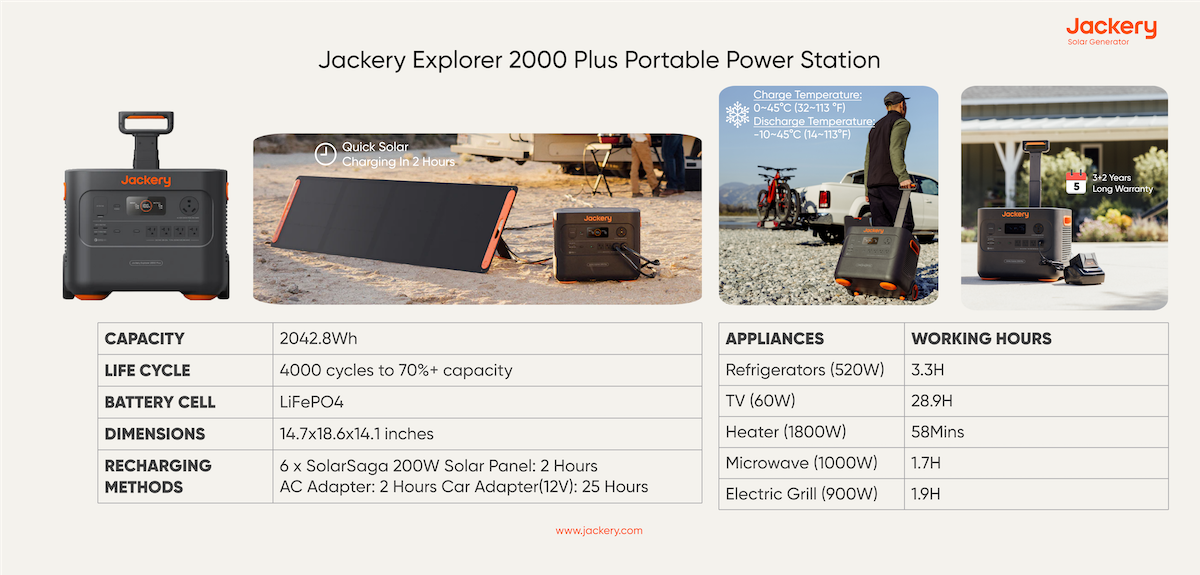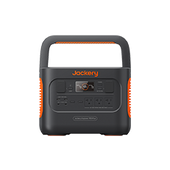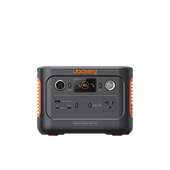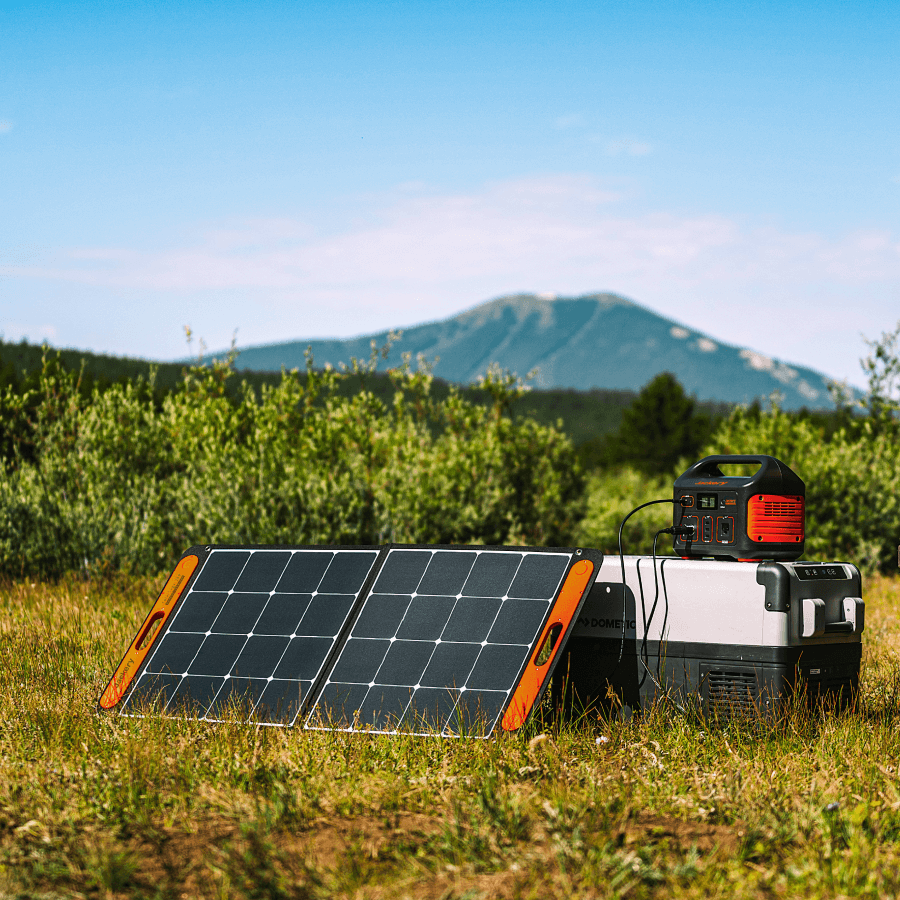You definitely don't want to purchase a battery or a power station that can last for only a few months. That's why it's essential to understand the battery life cycle or the number of charge and discharge cycles of the battery. It is one of the primary factors that defines how long the battery can last. Jackery Explorer Portable Power Stations are built with NMC or LiFePO4 batteries with long battery cycle life.
 For example, Jackery Explorer 2000 Plus Portable Power Station has an expandable LiFePO4 battery that ensures up to 10-year lifespan — even if you use it once daily. It has a long-lasting LFP battery reliability with 4000 charge cycles, after which the battery level drops to 70%. Similarly, the Jackery Explorer 3000 Pro Portable Power Station works with maximum efficiency for up to 2000 cycles, after which the level reduces to 70%.
For example, Jackery Explorer 2000 Plus Portable Power Station has an expandable LiFePO4 battery that ensures up to 10-year lifespan — even if you use it once daily. It has a long-lasting LFP battery reliability with 4000 charge cycles, after which the battery level drops to 70%. Similarly, the Jackery Explorer 3000 Pro Portable Power Station works with maximum efficiency for up to 2000 cycles, after which the level reduces to 70%.
What is Battery Cycle Life?
The battery cycle life is the number of charge as well as discharge cycles it can complete before losing performance. As you recharge and discharge the battery over and over again, it slowly reduces the ability to work with 100% efficiency. For this reason, it is crucial to learn the life cycle of the battery before investing in it.
The first time you discharge the brand-new battery, it will not recharge to its maximum capacity. However, this does not mean the battery has reached the end of its life. As a general rule, the battery cycle life is the number of cycles you get before you cannot recharge the battery to over 80% of the original capacity.
Another important term that can define the battery capacity is the depth of discharge. DoD is defined as the battery capacity used relative to its total capacity. For example, any battery with a 100Ah rating discharged to 40Ah would have a 60% DoD (depth of discharge) for that cycle.
There are many factors that affect the battery life cycle and its performance.
- Cyclic Life:An AGM or flooded battery generally has around 300-700 cycles under normal use, whereas the gel battery has 500-5000 cycles. Lithium-ion and LiFePO4 are highly efficient, with life cycles that range from 1000 to over 4000.
- Depth of Discharge Effect:If the battery works harder, it will fail relatively sooner. This means a higher capacity withdrawal would reduce the life cycle.
- Temperature Effect: Temperature is an essential factor affecting battery performance, charging and voltage control, and shelf life. There is more chemical activity in the battery at high temperatures than at lower temperatures. For this reason, the battery capacity is lower at low ambient temperatures.
How to Extend Battery Cycle Life?
There are many ways to extend the battery cycle life. Below, we will reveal a few easy and practical ways.
Optimal Depth of Discharge
The full charging and discharging cycle is called the depth of discharge. A 70% DoD means that 70% of the available energy is delivered and 30% remains in reserve. If the DoD of the battery is shallower, there is a high number of cycles given by the battery. A highly efficient and long-lasting lithium-ion generally has a low DoD and more cycles.
Avoid Extreme Temperature Conditions
You need to understand the optimum temperature when using the batteries or power stations. Extreme temperatures can damage the battery and eventually reduce their lifespans. It's better to check the product's operating temperature range and ensure you use it within the specified temperature.
Proper Charging and Discharging Techniques
A partial charge and discharge reduce the stress and extend the lifespan. Avoiding full cycles and typically staying between 100% and 50% DoD (or 0-50% SoC) is highly recommended. In addition, you must allow the lithium-ion battery to go through a conditioning phase by fully charging it once a day.
Battery Maintenance
In order to properly maintain the battery, you must store it in a well-ventilated place. If you want to store the Li-ion battery, ensure it has over 50% of its capacity. In addition, minimize the time the battery spends at either 0% or 100% charge to extend the lifespan.
Jackery Explorer Portable Power Stations are lightweight and powerful charging solutions for camping, RV life, home backup, and emergency. Although they have long life cycles, appropriate maintenance can extend the lifespan. Here are a few ways to improve the battery cycle life of Jackery power stations.
- You must store the Jackery Explorer Portable Power Station with at least 20% of battery capacity.
- While a fully charged battery can last many years, you must recharge it every 3 months to keep the power above 50% (even if you don't use it).
- In order to extend the battery lifespan, you need to store the power station within an ambient temperature of nearly 0-40°C (or 32-104°F) and charge it within -10-40°C (or 14-104°F).
Jackery Explorer Portable Power Stations Explained
Jackery Explorer Portable Power Station is a powerful battery that can charge most electrical devices for long hours. The Jackery SolarSaga Solar Panels are built with monocrystalline silicon cells that capture the sun's rays and convert them into electricity. The DC current is then transferred to the power station, where the pure sine wave inverter works to convert it to AC electricity.
If you are using Jackery Explorer 3000 Pro Portable Power Station, the working hours can be calculated as follows.
Working Hours = Battery Capacity * 0.85 / Operating wattage of the device = 3024Wh * 0.85 / 1000W = 2.5H.
Here, we are charging multiple devices that use 1000 watts of power.
Jackery Explorer 3000 Pro Portable Power Station
The Jackery Explorer 3000 Pro Portable Power Station weighs 63.93 lbs and is 30% lighter and smaller than similar products. The unit can perform its best until 2000 cycles, after which it is estimated to have over 70% of its original capacity. With a battery capacity of nearly 3024Wh, the large Jackery Explorer 3000 Pro Portable Power Station can charge 99% of home or outdoor electrical devices.

Customer Review
"The Jackery Explorer 3000 Pro is perfect. My entire home office (laptop, two external monitors, two printers, plus additional accessories) is connected to a surge suppressor, which I'm able to easily switch from the wall connection to my Jackery Explorer 3000 Pro." — TMann Stuff.
Jackery Explorer 2000 v2 Portable Power Station
The Jackery Explorer 2000 v2 Portable Power Station features a foldable handle and lightweight design. It has a large capacity to supply power to 99% of home or outdoor appliances. It operates by emitting only 30dB of noise, which is less than a refrigerator's hum, so you can charge TV or CPAP machines peacefully. Whether you want to charge essential appliances during a camping trip or brief power outage, the portable power station has got you covered.
Customer Review
“Never thought it would work so well. Just had it up at my camp for a week. It’s off the grid. Only used my generator once to charge up the Jackery. From 1 percent to 100 percent in one and a half hours. Love it. Good job Jackery!” — Martin.
Jackery Explorer 2000 Plus Portable Power Station
The expandable Jackery Explorer 2000 Plus Portable Power Station is a sustainable next-gen generator known for its fumes-free, cost-effective, and whisper-quiet nature. The LiFePO4 battery in this power station can be expanded from 2kWh to 24kWh with Jackery Battery Pack 2000 Plus. Once the battery completes 4000 charge cycles, the capacity reduces to 70%.

"We love this power station; it can be recharged quickly. No noise while enjoying the peace and quiet at the off-grid cabin. Run our fridge/freezer for about a day and a half, and that is with running lights and other things at the same time." — L Mc.
Jackery Explorer 1000 Plus Portable Power Station
The Jackery Explorer 1000 Plus Portable Power Station can charge almost all household or outdoor appliances for long hours. It has a high output among similar level products, supporting 99% of appliances. It supports up to three add-on battery packs to extend the battery capacity to 5kWh, ensuring 1-3 days of home backup power.
Customer Review“I charged up the Jackery in a little more than an hour to 100%. I plugged in my new 12 volt fridge to see how much energy it would take. After 12 hours the Jackery was still at 95%. I am very pleased and believe this will make travel and camping so much easier and more enjoyable.” — Lea Curtis.
|
|
Capacity |
Battery |
Cycle Life |
Working Hours |
|
3024Wh |
NMC |
2000 cycles to 70%+ capacity |
Microwave (700W): 3.6 H Kettle (850W): 3 H Electric Drill (900W): 2.8 H Electric pressure cooker (1080W): 2.3 H Coffee Maker (1120W): 2.2 H Portable Air Conditioner (1150W): 2.2 H |
|
|
2-24 kWh |
LiFePO4 |
4000 cycles to 70%+ capacity |
Microwave (700W): 2.4 H Kettle (850W): 2 H Electric Drill (900W): 1.9 H Electric pressure cooker (1080W): 1.6 H Coffee Maker (1120W): 1.5 H Portable Air Conditioner (1150W): 1.5 H |
Real-World Example: Lithium-ion Battery Cycle
The Li-ion batteries comprise single or multiple lithium-ion cells with a protective circuit board. The negative electrode of the lithium-ion cell is graphite made from carbon, and the positive end of the cell is made from a metal oxide. There's an organic solvent in which the lithium salt acts as an electrolyte.
Effects of Cycling of Lithium-ion Battery Performance
The lithium-ion battery works when the positive and negative electrodes move from one end to another. While it may work forever, elevated temperature, cycling, and aging decrease the battery performance over time. Generally, the capacity of the battery decreases during the cycling process. This is because there are several mechanisms associated with side reactions that occur in these batteries. The degradation rate of Li batteries is typically higher during the early cycles. Then, it increases rapidly when the battery reaches the end of its life.
Factors Affecting the Lithium-ion Battery Cycle Life
The battery life cycle is a complex process that takes charging and discharging into account. Here are a few key factors that affect the lithium-ion battery life cycle.
- Design and Manufacturing Process: The choice of materials is an essential factor affecting the overall battery performance and life. The performance characteristics of different materials vary, which eventually impacts the battery life cycle.
- Charging and Discharging Systems:Some other factors that impact the cycle life of lithium-ion batteries include the charge and discharge current's size, which charge or discharge method you use, the choice of charge and discharge cut-off voltage, etc.
- Nature of Materials: The nature of positive and negative current collectors affects the life cycle and capacity of the battery. The commonly used materials include copper and aluminum, which are corrosive metal materials.
Battery Cycle Life FAQs
How do I keep my battery 100% healthy?
Proper care and maintenance of any battery will help you keep it healthy. For example, you should not fully charge or discharge the battery — unless calibration is needed. While storing and using the battery, it is advised to keep it in a cool, moisture-free environment. In addition, you must use a manufacturer-recommended charger to power the battery. This will help keep the battery healthy and even improve its lifespan.
Can I use an iPhone while charging?
Yes, you can use the iPhone while charging. However, constantly using the smartphone while on charge can degrade the battery and even contribute to heating your phone. In order to maintain optimal battery performance, you must use the original charger.
Should I charge my iPhone to 100%?
If you want to keep the optimal battery health, it is recommended to charge your iPhone between 20% and 80%. While charging 100% won't necessarily damage the battery, overcharging can cause battery damage and reduce life cycles.
What is the 20 to 80 battery rule?
The 20-80% rule suggests that the battery should be charged between 20% and 80% of total capacity. It's one of the methods that can extend the battery life cycle and even improve the battery health.
Is slow charging better for the battery?
Yes, slow charging is one of the best ways to charge a battery. However, using a fast charger occasionally will not have an appreciable effect on the battery health. With slow charging, you can reach more than 3000 life cycles.
Final Thoughts
Once you understand the different factors that impact the battery cycle life, increasing the battery's life becomes easier. If you are still confused about prolonging the battery's lifespan, following the manufacturer's guidelines is best. Jackery offers a wide range of NMC and LiFePO4 batteries with thousands of life cycles.
The Jackery Explorer 2000 Plus Portable Power Station works with maximum efficiency for up to 4000 cycles, after which the capacity is reduced to 70%. You can choose portable power stations depending on your charging needs and preferences.






















































































































Leave a comment